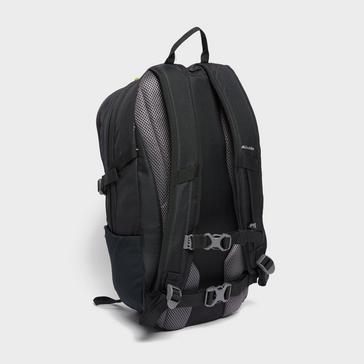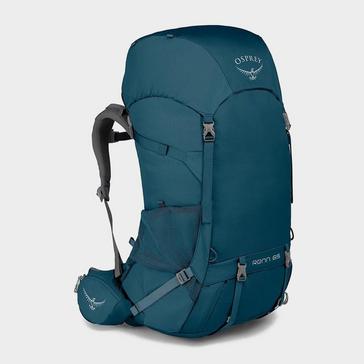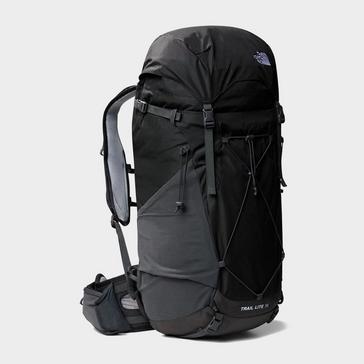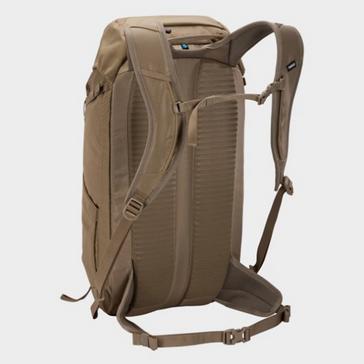Wild camping legality in the UK varies by location. Generally, it is legal in most of Scotland and Dartmoor National Park in England, while in the rest of England, Wales, and Northern Ireland, it requires landowner permission. Note – true wild camping means you are unlikely to have access to any facilities eg. a toilet or tap.
England:
Wales:
Scotland:
Northern Ireland:
Wild camping generally requires landowner permission.
Important Considerations:

Not quite ready to wild camp but want to experience something similar, with access to a basic toilet, a tap and a nearby parking place??
The Nearly Wild Camping Club offers this type of wilder camping – wild camping with permission (for a small fee):
Choosing the right rucksack for wild camping in the UK is essential for comfort and practicality. The size you need depends on how long you’re camping, how much gear you carry, and your personal preferences.



For a one-night trip, a 40–50 litre rucksack is often sufficient. It allows space for a tent or bivvy, sleeping bag, cooking gear, and food, without being too bulky.
For multi-day trips, a 50–70 litre rucksack gives you the extra room needed for more supplies, extra clothing, and possibly a larger tent.
For extended treks (5+ days), a 70+ litre rucksack may be necessary. You’ll need enough space for extra food, additional layers, and possibly specialist equipment, depending on the terrain and weather conditions.



Size isn’t the only factor—organization matters. Look for a rucksack with multiple compartments, external straps for bulky items, and adjustable back support for comfort.
A well-packed lightweight rucksack makes hiking easier. Distribute weight evenly, keep frequently used items accessible, and use dry bags to protect gear from the unpredictable UK weather.



Opting for the smallest practical size reduces weight and strain. Prioritize essentials, invest in compact gear, and test-pack before setting off. Whether you’re heading to the Lake District or the Scottish Highlands, the right rucksack will make your adventure far more enjoyable.
Time to gear up and explore the wilderness!
Woodland camping offers a refreshing escape from the chaos of modern life, immersing adventurers in the tranquility of towering trees, crisp air, and the soothing sounds of nature. Whether you’re an experienced camper or a novice yearning for a break from technology, spending time in the woods can be an enriching experience.
One of the most obvious benefits is the opportunity to disconnect from digital distractions. In the woods, the incessant hum of notifications fades away, allowing campers to embrace a slower pace and be present in the moment. This immersion in nature has been shown to reduce stress and anxiety, as the natural surroundings promote relaxation and mental clarity.
Physical health also reaps the rewards of woodland camping. Hiking through forest paths, collecting firewood, and setting up camp all engage the body in a way that traditional workouts often cannot. The fresh air is invigorating, and exposure to natural sunlight boosts vitamin D levels, enhancing overall well-being. Studies suggest that time spent outdoors can improve cardiovascular health and strengthen the immune system, making camping a holistic retreat for body and mind.
Beyond personal benefits, woodland camping fosters a deeper appreciation for the environment. Observing wildlife, learning to identify flora, and understanding ecological systems can spark a sense of stewardship. Many campers leave with a newfound respect for nature, often incorporating more sustainable practices into their daily lives.
Lastly, there is a unique camaraderie that comes with sharing a campsite under the stars. Whether gathered around a crackling fire or navigating paths together, woodland camping nurtures meaningful connections and unforgettable memories.
With its blend of adventure, wellness, and serenity, woodland camping is an experience that rejuvenates the soul and strengthens our bond with nature. So pack up, head into the woods, and embrace the wild!
The outdoors is a place of beauty, adventure, and connection with nature. In order to preserve this natural environment for generations to come, it is important to follow the principles of Leave No Trace (LNT) camping ethos.
Leave No Trace is a set of seven principles that guide outdoor enthusiasts on how to minimize their impact on the environment and leave it pristine for others to enjoy. These principles were developed in the 1960s by outdoor recreation and conservation professionals, and have since been adopted by various organizations around the world.

The Seven Principles of Leave No Trace
Plan ahead and prepare: Proper planning can help minimize potential issues such as overcrowding or damage to sensitive areas.
Travel and camp on durable surfaces: Stick to established paths and camp locations to avoid damaging vegetation.
Dispose of waste properly: Pack out all rubbish, including food waste, and dispose of human waste properly.
Leave what you find: Do not take anything from the natural environment, whether it is a rock or a wildflower.
Minimize campfire impacts: Use existing fire rings and make sure to fully extinguish the fire before leaving.
Respect wildlife: Observe animals from a distance and do not feed or approach them.
Be considerate of other visitors: Respect others’ experience in the outdoors by keeping noise levels down and giving them space.
By following these principles, we can all do our part in preserving the natural beauty of our environment. But it is not just about minimizing our impact, it is also about leaving a positive impact by being good stewards of the land.

Tips for Practicing Leave No Trace
Pack out what you pack in: Bring rubbish bags with you and make sure to leave your camp location cleaner than you found it.
Use a stove instead of making a campfire: This helps minimize the impact on the natural environment and reduces the risk of wildfires.
Stay on designated paths: Venturing off path can cause erosion and damage to delicate plant life.
Respect wildlife and their habitats: Do not disturb or approach animals, and make sure to properly secure food to avoid attracting them to your campsite.
Leave nature as you found it: Resist the urge to take home souvenirs such as rocks, shells, or plants.
Educate others: Spread the message of Leave No Trace and encourage others to follow these principles.
Adhering to the Leave No Trace camping ethos not only helps protect the environment, but it also ensures that future generations will be able to enjoy the same natural wonders that we do today.
So next time you head out into the great outdoors, remember to leave no trace and leave it better than you found it. Happy camping!
The Leave No Trace principles not only apply to camping, but also to any outdoor activity such as hiking, backpacking, or even just a day trip
Going on a camping trip with your furry best friend can be the perfect adventure for both of you. But before you hit the road, there are a few things you need to keep in mind. As much as your dog loves being by your side, being in a new environment can be intimidating for them. That’s why we’ve gathered some tips for taking your dog camping to make sure that you and your pup have a fun and safe adventure.
1. Prepare your dog for the great outdoors
Before you go camping, start preparing your dog for the new environment. Take them on hikes and walks in the woods and let them get used to the sights and smells of nature. This will help them familiarize themselves with new things and get comfortable in a new place. You’ll also want to make sure they’re up-to-date on their vaccinations, to keep them safe against any potential illnesses they may encounter while out in the wild.
2. Make a list of essential supplies
Just like you, your dog will need some gear for camping. Make a list of essential supplies, such as a leash, collar, water bowl, food dish, and poop bags. You may also want to bring a dog bed or blanket to ensure your furry friend stays comfortable throughout the trip. Don’t forget to pack plenty of food, treats, and plenty of fresh water for your pup. It’s important to keep them hydrated, especially when they’re running around in the sun all day.

3. Choose a dog-friendly camping location
Make sure to research dog-friendly camp location before you head out. Look for places that allow dogs and offer amenities such as a dog wash and off-leash areas. You’ll also want to ensure that the location has plenty of space for your dog to run around and explore safely.
4. Keep your pup safe
When you’re out camping, there are dangers that come with it. From wild animals to unexpected weather, it’s important to keep your dog safe at all times. Bring a pet first-aid kit, and make sure your dog stays on a leash or under your supervision at all times. Use flea and tick prevention and bring your dog’s medications in case of an emergency.
5. Have fun!
Taking your dog on a camping trip can be an amazing experience for both of you. Enjoy the great outdoors by hiking with your pup, swimming in a lake, or playing fetch in an open field. Just remember to keep your dog happy and safe so that everyone has fun.
Camping with your furry friend can be one of the best bonding experiences you’ll ever have. By following these tips for taking your dog camping, you can ensure that your pup stays safe and happy while enjoying nature’s beauty. Make sure to prepare your dog for their adventure, stock up on essential supplies, and find a dog-friendly camp location that’s perfect for your pup. As long as you’re well-prepared and ready to have fun, you and your dog are sure to have an unforgettable trip!